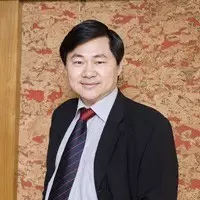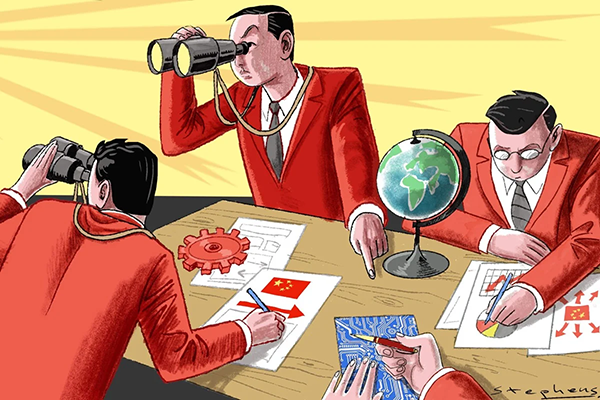Wang Huiyao: Two Sessions signals ‘people’s stimulus’
May 27 , 2020

Chinese President Xi Jinping, also general secretary of the Communist Party of China Central Committee and chairman of the Central Military Commission, joins a deliberation with deputies from Hubei Province at the third session of the 13th National People’s Congress in Beijing, China, May 24, 2020. /Xinhua
By Wang Huiyao | President of the Center for China and Globalization(CCG)
This year’s Two Sessions, the most important meetings on China’s political calendar, have been unlike any other in recent memory.
With China emerging from a pandemic that has now swept the world, the meetings took on a new format combining physical meetings and cloud technologies.
This innovation allowed delegates to discuss plans and outline a new economic vision to bring China’s economy out of the COVID-19 shadow as soon as possible.
President Xi Jinping has been focused on economic policy more than previous years. He joined a panel discussion with economic policy advisers on May 23.
It was confirmed the day before that China would not set a specific annual GDP target for the first time since 1990. This reflects the current economic realities, as China faces intertwined structural and external challenges compounded by the COVID-19 outbreak. The IMF has said it is likely to further downgrade its forecast of a three percent contraction of the global economy this year.
Yet the decision to forgo a fixed growth target reflects more than just short-term headwinds. It also signals a shift of mindset and a new stage for China’s economic and social development.
Despite the absence of a growth target, the government is committed to ensuring stable economic performance. But rather than the singular focus on a national growth target, this means orienting efforts towards other metrics more closely linked to people’s lives, such as poverty alleviation, employment, consumption and living standards. This is in line with the new era emphasis on quality over quantity-oriented growth and a more holistic approach to raising living standards.
Revving new growth engines
At the Two Sessions, leaders outlined broad plans to get the economy back on track and safeguard people’s livelihoods.
Policy support is being stepped up, with an expanded fiscal deficit, issuance of special treasury and local government bonds, and accelerated credit growth.
But compared to other countries and the expectations of some analysts, the degree of short-term fiscal and monetary stimulus has been relatively targeted and constrained. More emphasis was put on a long-term strategic vision based on two pillars that will provide the kinetic energy to drive a sustainable recovery and deliver benefits to regular citizens.
The first of these is innovation. During the panel discussion, the importance of harnessing new growth drivers such as intelligent manufacturing, life and health, new materials, and other strategic emerging industries was stressed.
Advances in these sectors will be supported by the government’s push to develop “new infrastructure” such as 5G networks, Internet of Things and data centers. At a press conference on the sidelines of the Two Sessions, Miao Wei, China’s Minister for Industry and Information Technology, said that China is building 10,000 5G base stations every month and seven million new 5G users every month.
The second pillar is China’s continuous opening-up and integration with the global economy. While the pandemic has exacerbated inward-looking trends of protectionism and anti-globalization in some countries, opening-up has done much for China’s economy and remains a key source of growth potential. President Xi said market economy was a key for China’s development and called for unwavering efforts to make economic globalization more open, inclusive, and balanced so that benefits are shared by all.
Officials have sent strong signals of China’s commitment to further opening-up at the Two Sessions.
When delivering a government work report, Premier Li Keqiang said the government will liberalize foreign investment, including shortening the negative list for foreign investment and establishing new free trade zones (FTZs). Since it was introduced in the Shanghai FTZ in 2013, the list has shrunk from 190 items to just 37. The National Development and Reform Commission (NDRC) has indicated further openings in services, financial, manufacturing and agricultural sectors. The government has also pledged to draw up a negative list for cross-border trade in services.
These concrete steps are important signals for the international community. On top of efforts to improve the foreign investment environment, such as implementing the foreign investment law, the continued relaxing of controls should help attract multinational corporations to invest in China despite challenging external conditions and business sentiment.
In turn, this deepening integration with the global economy will support China’s shift to a high-quality growth model that helps accelerate the recovery and creates jobs and prosperity for the people.
Attention to people’s needs
Rebalancing economic priorities shows the leaderships’ focus on the fate of regular citizens as China emerges from the worst of the pandemic. These exceptional circumstances call for exceptional measures, and nowhere has been harder hit than Hubei Province.
In recognition of this sacrifice, on May 24, President Xi joined a deliberation with deputies from Hubei, his first such meeting with this provincial delegation at the Two Sessions since becoming president. Paying tribute to the “heroic” people of Wuhan, he also called for a new chapter of high-quality development in Hubei.
As the Two Sessions maps out a new economic vision, this chapter is set to be part of the bigger story of China’s human-centered development in the new era.
About Author

Dr. Wang Huiyao is president of the Center for China and Globalization(CCG), the leading non-government think tank in China, with over 100 researchers and members of staff.
Topical News See more






